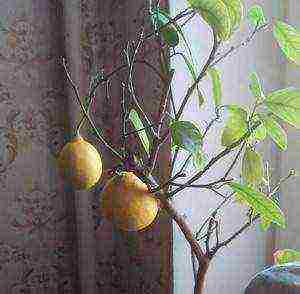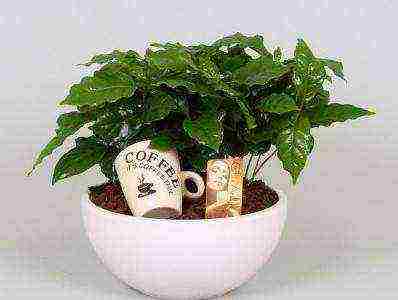Content
- 1 What is included in the soil?
- 2 Composting process
- 3 How to lay out the compost correctly?
- 4 Mycelium types
- 5 How to grow mushroom mycelium at home?
- 6 Correct mushroom cultivation technology
- 7 Champignons in bags
- 8 Harvest in bags
- 9 Benefits of growing mushrooms in bags
- 10 Champignons in the basement
- 11 How to properly grow mushrooms at home in the country?
- 12 Growing champignons in an apartment
- 13 Before you start growing mushrooms
- 14 Premises
- 15 Substrate
- 16 Mycelium
- 17 Champignon plantation care
Champignons are quite common mushrooms. They are massively grown for use in the food industry, in particular in cooking. Entrepreneurs build their business on their breeding, which brings good income. But experienced farmers prefer home-grown mushrooms. Read about this in the article.
What is included in the soil?
Is it possible to grow champignons at home? Of course, this is within the power of a farmer or owner of a private backyard without any experience. The main thing is to stock up on knowledge in this matter and clearly follow the instructions. The most time consuming process in mushroom cultivation is soil preparation. For a mycelium area of three square meters, 100 kilograms of plant ingredients will be required, which include the following:
- Straw.
- Cereal grains, you can use rye or wheat.
- Fallen leaves of plants.
- Tops from tomatoes or potatoes.
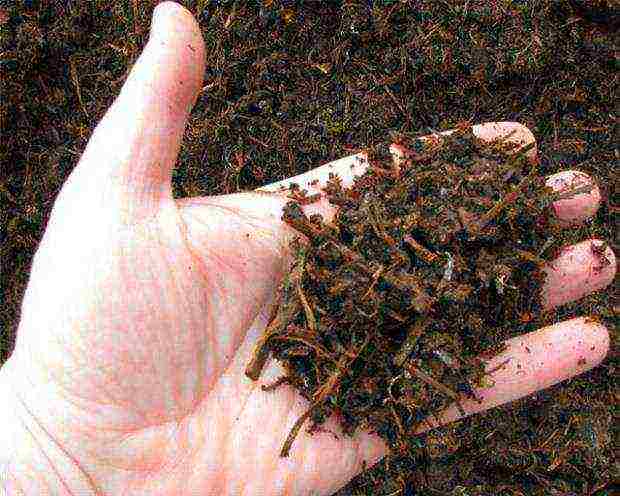
In addition, the composition of the soil should include:
- Horse or cow manure in the amount of half a centner.
- Water - 300-400 liters.
- Urea and superphosphate in an amount of two kilograms each.
- Plaster - seven to eight, and chalk - five kilograms.
You can prepare a different formulation using poultry droppings. Other ingredients and their quantity are taken here:
- Litter and straw - centered.
- Water - 300 liters.
- Gypsum, alabaster - as in the previous composition.
- Urea is two kilograms.
Composting process
First you need to make a collar with the same dimensions (one and a half meters) in width, length and height. It is with this ratio of parameters that combustion will properly occur. The compost will mature in two to three weeks.
How to grow mushrooms at home? First, you need to plant them in soil, which is prepared as follows: all components of plant origin and straw must be soaked for a day. At the same time, they and manure should be laid in layers, and the straw should be watered abundantly. The components contained in the pile must be thoroughly mixed and moistened once a week to ensure proper combustion. At the first mixing, crushed lime is added to the compost. Second time - superphosphate. Then mixing is carried out with the addition of crushed gypsum or alabaster. Each time after mixing, the resulting stack is covered with foil.
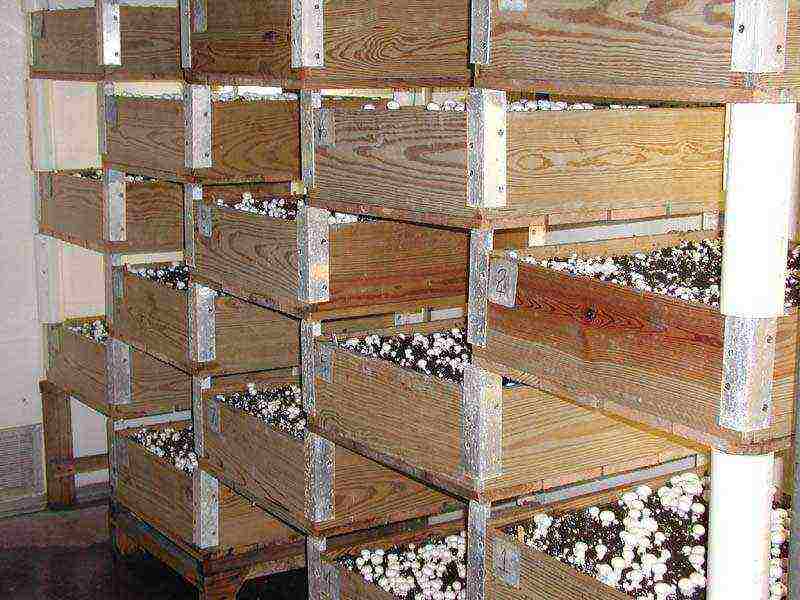
It should be borne in mind that during the preparation of the soil, an unpleasant odor will be emitted, similar to ammonia and carbon dioxide. Therefore, it is better to do cooking on the street. But at the same time, protection from sunlight and precipitation is needed. If you organize the process indoors, it should be well ventilated.
How to grow champignon mushrooms at home? To do this, you need to take into account important points, without which this process is impracticable.First of all, a stock of compost is made, since it is necessary in a large volume to grow mushrooms. During its preparation, the temperature can reach from 53 to 70 ° C. When the combustion process is over, the thermometer will drop to 21-25 ° C, and the unpleasant odor will disappear. The finished soil has an elastic structure and a brown color. It does not stick to your hands, the straw can be easily torn apart.
How to properly lay out the compost?
When the preparation of the soil is completed, they begin another procedure - laying it. First, you need to select the containers in which the mushrooms will be grown. They can be racks, wooden boxes, plastic containers, bags. The compost mass is laid out in prepared containers in a layer, the height of which should not exceed 22 cm.
Mycelium types
The seed of mushrooms is called mycelium. It is grown at home or in laboratories. There are two types of mycelium:
- Compostable - this type of seed is stored for a long time at zero temperature, for about a year. For an area of one square meter, 500 g of mycelium will be required.
- Grain - this composition is more effective than the first. Seed material of this type germinates better and gives larger yields. Its consumption for the same area is less, only 330-350 g. But this mycelium has a significant drawback: a short shelf life. Only half a year its properties are preserved. Keep the seed in the refrigerator.
How to grow mushroom mycelium at home?
If the mushrooms are grown commercially, it is better to buy planting material. But some are embarrassed by the conditions in which it was grown, and therefore they do it on their own. To obtain the material, you need to sow spores or isolate it from the fruit bodies, and then place it in a specially prepared medium: wort agar. Its preparation is carried out according to the following technology:

- First you need to mix beer wort (one liter) and agar-agar (20 g) with boiling water.
- After dissolving the ingredients, the composition is poured into test tubes for a third of them. Then the containers are plugged with cotton swabs and placed in an autoclave with a temperature of 101 ° C and 1.5 atmospheres for 30 minutes.
- The test tubes are placed not straight, but obliquely, so that no more than 3.5 cm remains to the plugs. Now it remains to wait until the wort hardens.
- After that, spores or a piece of the fruiting body must be added to the test tubes, while observing sterility.
- Containers should be kept in a thermostat or dark room at a temperature of 24 ° C until they are overgrown. In a couple of weeks, the nutrient medium will be assimilated by the myceliums. This means that they are completely ready for landing.
Usually this composition is used by mushroom pickers to grow mycelium at home, although there are also substitutes: oat agar, carrot agar.
Correct mushroom cultivation technology
Mushrooms can be grown at home using mycelium. To do this, you need to plant it correctly, and in the room you need to correctly select the temperature and humidity mode. If these conditions are met, the first harvest can be obtained in a year.
If grain mycelium is the planting material, grooves 30 cm deep and 50-60 cm wide should be made in the soil. The distance between the pits should be 20 cm. In order for the temperature to normalize, you need to leave them for two to three days and only then lay the mycelium. A checkerboard pattern is used to locate the body of the mushroom.
If compost mycelium is used for planting champignons, the technology is different. The bottom of the small pits is covered with drainage. Compost is placed on top, in which the mycelium is placed. After that, the planting material is closed by it. Subject to all the rules, taking into account the high-quality mycelium, after seven days, you can expect the appearance of new branching threads.
After 21 days, you need to lay out moist soil on top of the beds 25-30 cm thick.If the layer is larger, the bodies of the mushrooms will be blocked, their germination will not occur soon.
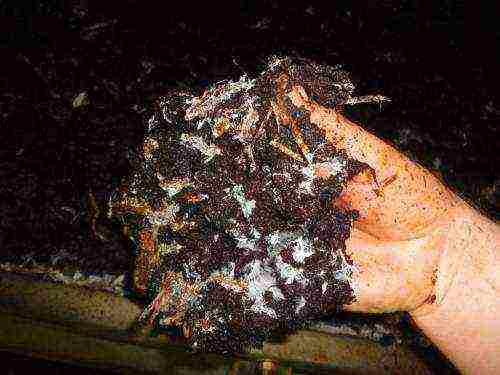
In order to maintain the temperature regime in the room where the mushrooms are grown, it is necessary to temporarily install sheds or cover the ground with straw. If a white bloom appears on the compost, it means that it needs to be moistened. After watering the soil, the canopy or straw is removed.
The first harvest will not take long, only 45 days. You need to pick mushrooms as soon as they ripen, since the yield period is short, only three to four days. The next fruiting period should be expected in three to four months. The harvests of the first waves are the richest.
Champignons in bags
How to grow champignon mushrooms at home? There are many possibilities for this. Each courtyard has outbuildings and basements. They are adapted for growing mushrooms. However, you can grow mushrooms at home in plastic bags. This method has been used in many countries for a long time. It allows you to get large volumes of mushroom harvest.
Bags can be made by yourself from a transparent polymer film of various capacities. For growing at home, 25 kg are more suitable. But the main criterion for choosing bags is the convenience in performing work on growing mushrooms. And for it to be successful, you need to correctly arrange the bags in the room. This is done in a variety of ways, but the most common are the following:
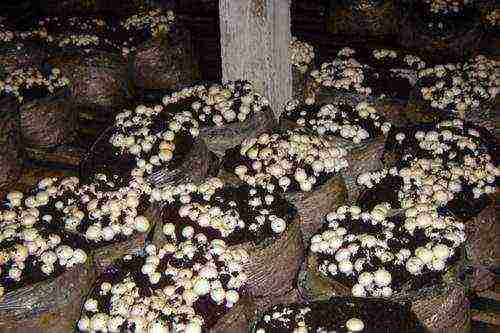
- According to the principle of chess arrangement. With this method, the usable area is not used only by 10%.
- Parallel bag placement. In this case, the area loss is even greater - 20%.
This can be compensated for by deep bags, which are filled with more substrate. And the space between the unusual beds is used for air circulation. There are different options for how to grow mushrooms at home. If everything is done in compliance with the technology, you can achieve an excellent result.
Harvest in bags
The mushroom picking time is the most enjoyable time. The mushrooms ripen four months after planting the mycelium in the soil of the bag. When harvesting, you need to be very careful: you cannot cut off the mushrooms with a sharp blade or other object, they need to be twisted. After that, the mycelium is sprinkled with a nutritious substrate and watered using a spray bottle. It will bear fruit for two weeks. During this period of time, the mushrooms are harvested in two to three days. It is advisable to use fresh, not frozen mushrooms for food. Mushrooms with light plates inside the cap are useful. If the mushrooms are old, then they will have a brown color, as these mushrooms accumulate toxic substances that can be poisoned.
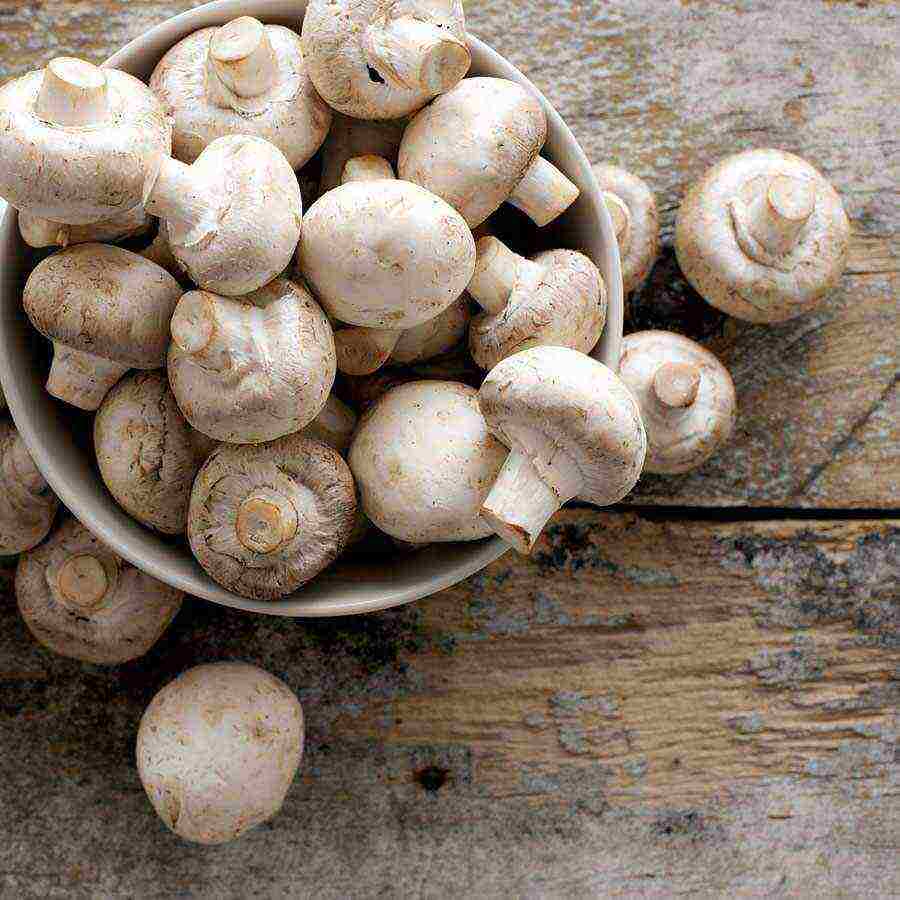
Benefits of growing mushrooms in bags
These mushrooms are unpretentious, they can grow in an open-air garden bed or indoors. But experienced mushroom pickers prefer to grow them in bags, since this method has a number of advantages:
- Pests and various diseases do not spread to the entire area, since if the need arises, you can always remove a specific bag from the room.
- Thanks to the mobility of the unusual bag-shaped beds, mushrooms can be grown seasonally and continuously.
- During placement, bags can be placed in several tiers on special stands. This will save space. This is especially important when growing indoors.
- The cost of polyethylene bags is lower than plastic containers. This is important when growing mushrooms in large quantities.
The disadvantage of this technology is the use of manual labor. But if the scale of cultivation is small, it is not burdensome.
Champignons in the basement
It is convenient to grow mushrooms in such a place, since there is a stable microclimate in the basement located under the ground.Here, the labor costs for creating optimal conditions for cultivating champignons are much less than, for example, in greenhouses. It is not difficult to grow mushrooms at home in the basement, the main thing is to monitor the temperature and humidity conditions. During the incubation period, the air humidity should be 75%, not lower. If the basement is dry, use a humidifier. It is important to know that spores are activated at a higher temperature - from 24 to 28 ° C, and fungi germinate when it drops to 16 ° C. The basement must meet the following requirements:
- Have concrete walls.
- Wooden flooring is strictly prohibited. The floor needs to be concreted, in extreme cases - to cement it.
- There must be ventilation in the basement.
- To prevent fungi from damaging insects that can enter the basement, the ventilation holes are closed with nets.
- Walls with ceilings should be disinfected. You can use lime for this.
- If the basement is large, it must be divided into zones: for the incubation period and for obtaining fruit bodies.
How to properly grow mushrooms at home in the country?
Growing mushrooms in this way is much more difficult than, for example, in a basement. Here, the choice of a site for planting mycelium is of great importance. How to grow mushrooms at home? To do this, you need to find a place that is always in the shade, and the soil never dries up. A canopy is being erected over the site or a darkened greenhouse is erected at this place. How mushrooms are grown at home (photos are presented in the article)? The mycelium is planted using standard technology. For champignons, an important condition for growth is the correct temperature and humidity. These indicators should be maintained, especially since the mushrooms categorically do not tolerate heat. The choice of substrate is equally important. It should contain large amounts of nutrients and small amounts of carbon dioxide. The best option is land, which must be brought from the forest in advance.
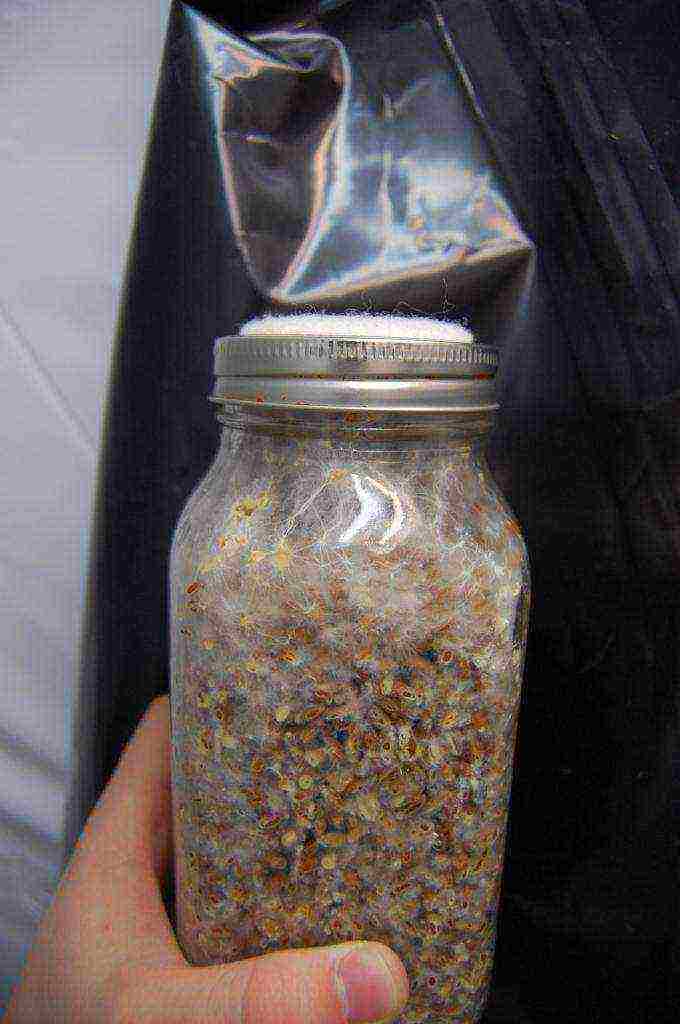
Growing champignons in an apartment
This method is suitable for those who do not have a summer cottage or vegetable garden. The main task for such cultivation of mushrooms is to create optimal conditions under which they will grow and bear fruit normally. An example of how to grow champignons at home is presented step by step below:
- The first thing to do is to isolate any room in the apartment for growing mushrooms from those rooms in which people live.
- Measure moisture. It should be high, about 90%. If its readings are lower, you need to install a humidifier.
- To maintain the optimum temperature, the room is equipped with heaters and ventilation. With their help, the temperature regime will be maintained. It should be borne in mind that mycelium germinates at 20 ° C, and fruiting bodies - at 15 ° C.
- After preparing the room, the selected containers are filled with the substrate.
- Mycelium is planted in them, covered with a film on top, which must be removed after the appearance of the fungi.
- The soil is constantly moistened, it must not be allowed to dry out.
- When the time comes, the mushrooms should be harvested.
Growing champignons at home for beginners, as well as for experienced mushroom pickers, is a modern, fashionable, exciting activity. This is both a kind of hobby and a source of additional income, if you approach business rationally and competently.
Champignons are a fairly popular, always in demand, tasty and healthy food product. They do not stale on store shelves, despite the fact that they do not have the lowest cost. Growing them yourself, you will always be sure of their "pure" origin. They are useful: they contain glucose, carbohydrates, vitamins, 18 amino acids, easily digestible fats. They are also harmoniously combined with any products, they can be boiled, fried, baked, pickled, canned.
This mushroom is incredibly tasty, low in calories, and is an excellent alternative to meat (which undoubtedly attracts the attention of vegetarians).
Knowing how to grow mushrooms at home, you can provide yourself, as well as your friends and relatives with a quality product.
Champignons, photo:

Before starting to practice mushroom growing, you should sensibly assess your desires and capabilities. In addition to time and money (purchase of materials), you must have appropriate premises. Some skills, a detailed study of information on the relevant Internet forums, the presence of a competent advisor will never hurt you. If we compare the process of growing mushrooms and oyster mushrooms, then our case, of course, is more time consuming. But if you compare it with the worries and nuances of growing porcini mushrooms, then it will be much easier, shorter in terms.
↑ back to content ↑ Where do mushrooms grow in nature?
If we consider natural conditions, then they are found almost everywhere. Forests, steppes, meadows, forest edges, lowlands, open spaces with moist soil and even semi-deserts, mountain forests are common habitats.
As for the "home" conditions, they can grow in a garden or vegetable garden, cellar, basement, specially equipped garage, greenhouse.
How to grow mushrooms? Many years of experience of mushroom pickers have proven that they grow best where the basement is equipped with good ventilation.
In this case, the air temperature should be relatively cool (not higher than +20 ° C), and if this process is set to flow, then the indicator of the mercury column on the thermometer should vary between +12 .. + 18 ° C all year round. The percentage of humidity should be approximately 70..85%, lighting does not play a special role.
It is not recommended to grow mushrooms in an apartment due to the lack of all the required standards: temperature, the presence of compost (odors from it), lack of space.
↑ to content ↑ Cultivation of champignons at home - technology
The necessary factors for a successful process are:
- The right choice of location.
- Disinfection of the premises.
- Microclimate organization.
- Competent preparation of the substrate.
- Composting.
- Mycelium selection.
- Planting mycelium.
- Appropriate care.
As mentioned above, under properly organized conditions, mushrooms can be grown throughout the year. The technology itself is not very complex, as it might initially seem. From the very beginning, you need to correctly arrange everything, and then the process will go along the knurled path. This work can even be called creative, something like a hobby. To date, breeders have bred approximately 50 varieties of this mushroom, which have minor differences in appearance. The color of the cap, its structure, and the duration of storage may vary, but all cultivated varieties are “children” of the common white champignon.
An example of a light brown variety in the photo:
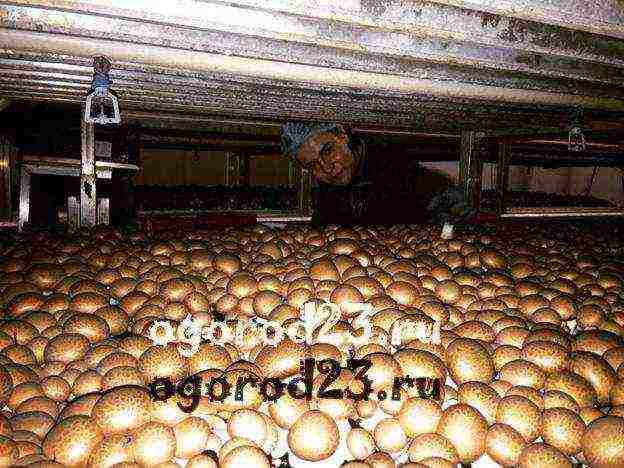
Let's consider basement growing as a basic example, since this method is considered the most common. For so-called “cellar” breeding, it is best to choose high-yielding varieties such as Sylvan 130, Hauser A15 or Somycel 512. They are quite unpretentious, it is not difficult to take care of them, and they are also very "prolific".
Remember - the most important factor for the successful result of your efforts is the presence of well-established ventilation in the room where the mushrooms will grow!
A constant supply of fresh air is very important, since during growth they emit carbon dioxide, and its excessive concentration in the room leads to stretching, lengthening of the mushroom leg.
↑ back to content ↑ Growing mushrooms in the basement
The selected room must be decontaminated.This factor does not depend on whether it is a basement, a garage or a separate shed. As mentioned above, in addition to high-quality ventilation, there must be a high level of humidity. This is necessary for the qualitative growth of mushrooms, but high humidity is a direct path to the appearance of mold and various fungi on the walls and shelves. In addition, the champignons themselves are extremely sensitive to all kinds of parasites and diseases. Therefore, the processing of the premises is a must for the mushroom grower.
How to grow champignons at home - disinfection of the premises:
- Of the most common, often used, it is whitewashing of the ceiling, walls, all surfaces with limestone with copper sulfate (copper sulfate) added to it. The so-called "recipe": 2 or 3 kg of slaked lime + 100 g of copper sulfate per bucket of water (10 liters). When working with disinfectants, be sure to wear a face shield!
- The second method is more dangerous for the human respiratory tract and also requires protection. 350 g of bleach is taken, diluted with 10 liters of water, applied by irrigating the walls of the room.
- Irrigation of walls and other surfaces with 4% formalin, using a construction spray gun is the most convenient.
- You can fumigate a room with a sulfuric checker - it also gives a very effective preventive effect.
- Chlorophos is a radical, destructive method, but too poisonous in its composition. It works not only on mold, but also on harmful insects.
After any treatment, the room must be properly ventilated - this is also a prerequisite.
Let's go back to ventilation, or rather - let's clarify one nuance: the air should be fresh, but drafts should be excluded. It is better to close ventilation pipes ("strangleholds") with nets with a fine mesh - this will create an obstacle to the penetration of insects, as well as a small barrier for air masses. If you have a serious room of large size, and the cultivation is put on stream, then the ventilation system should be more global, with additional fans located above each large box. If opportunities allow, then the installation of air purifiers with replaceable filters will not be superfluous for this business.
It is clear that a thermometer with a hygrometer is essential for a room where mushrooms are grown. So you can always control the level of humidity in the air: if there is a lack - to irrigate with water from a spray bottle, if there is an excess - to ventilate. With the onset of the summer heat, fans solve this problem, but if the cultivation of this type of mushroom occurs throughout the year, then in addition to all the aforementioned benefits of civilization, you will also need additional heating of the basement or cellar.
Large cellar room, photo:
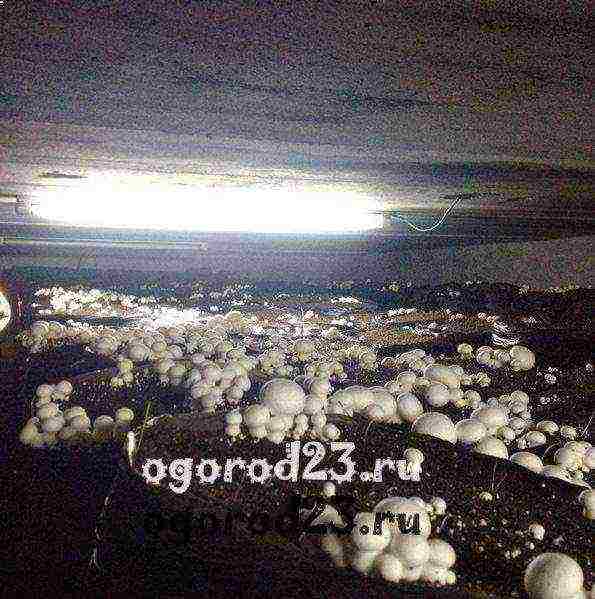
It is best if your cellar, in addition to all the requirements for growing, will have an earthen floor (not concrete). By and large, the more purposeful the room will be adapted specifically for mushroom growing, the better. Any unnecessary additional factors in the basement, cellar, garage or shed that are not related to the cultivation of mushrooms will only interfere and disrupt the "microclimate" of the room.
To the "pluses" of mushroom science can be added the fact that they are able to perfectly bear fruit even in complete darkness. This sets them apart from all other green dwellers. The weakest light bulb is enough - they will feel comfortable, but the light, rather, will be more useful to you in order to comfortably navigate in place.
If growing champignons at home initially has far-reaching plans, the owner has a large room, then dividing it into 2 zones will be a reasonable, convenient solution. Simply put - mushrooms must originate somewhere, and a specially prepared substrate is designed for this process (more on that later). So, in one zone there will be a substrate through which the mycelium will spread (this is called incubation).In the second compartment, boxes with mushrooms will be placed directly, where they will be distilled.
The temperature regime of these two compartments should also be different: mycelium usually grows at a temperature of +23 .. + 24 C °, and the growth of mushrooms occurs at a temperature column of +16 .. + 18 C °. If you get used to it, work out your own "schedule" of moving boxes from one zone to another, you will be able to grow these delicious, beloved mushrooms all year round.
↑ to content ↑ Compost for growing mushrooms
Composting (substrate) preparation is one of the most critical aspects of mushroom growing. The quality of the mushrooms will directly depend on a properly prepared substrate. Usually, when you buy mushroom mycelium, the packaging with the contents indicates the appropriate substrate for this variety, as well as the nuances of its preparation. The varieties are different, and the composition of the compost, its collection technology may vary. However, most often these parameters do not differ significantly.
Mycelium, photo:
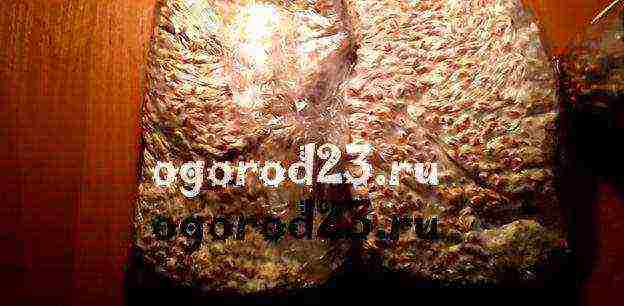
The substrate should be prepared either in a specially designated room for this purpose, or in the open air (outdoors), under a well-equipped canopy. It is important that no precipitation (rain) or sun rays fall on the compost. It is also highly discouraged to pour compost on the "bare" ground - spread a sheet of thick plastic wrap. Thus, unwanted insects or any other pests will not penetrate into the substrate. It should not touch the ground, but blowing air over it from all sides is a must!
The mushroom compost should be moderately moist, as excess moisture can disrupt proper fermentation processes.
Be that as it may, the street is the best place for the maturation of the substrate, the active release of ammonia, carbon dioxide will not be useful to anyone. The average time of "readiness" of the substrate, its fermentation, is approximately 25-30 days. During this period, it is recommended to stir it at least three times (to ensure even fermentation). You will know that the process has come to an end by the absence of a specific smell of ammonia. By this time, its color acquires a brownish tint. While the substrate is fermenting, the temperature inside it can be about +50 .. + 65 C °, and the compost already ready for use has a temperature of no more than +24 .. + 25 C °.
By the way, to enrich the contents of the compost when you first stir it, you can add crushed lime to the general composition. During the second mixing - superphosphate fertilizer, during the third - ground gypsum or its construction analogue (alabaster). Already "ready" substrate, in addition to the above-described features, does not stick to hands, springy with tactile contact, the straw is extremely softened, easily divided into fragments.
As an alternative to the independent process of compiling the substrate, you can advise the purchase of ready-made compost, which is sold in the garden departments of supermarkets or flower shops. Of course, such a substrate will be of less quality than one prepared with one's own hand, although it will be written on the packaging that it has all the required characteristics.
It is up to you to decide what is more convenient for you, whether you have the time to carry out all the points of preparation for growing these mushrooms. While looking at the common attributes of good compost, let's highlight the main ingredients.
The composition of the compost for growing mushrooms:
- For these purposes, it is considered to be the best horse waste products. In addition, it is important to consider that the horses ate hay, and not green grass. The moisture content of horse manure for composing the substrate should be approximately 45%. Horse waste can be replaced with cow or bird waste, but, according to the experience of seasoned mushroom pickers, the harvest on such a "basis" will be much worse. So, you need about 100 kg of horse manure.
- Straw - choose a dry, rye or wheat variety. You will also need about 100 kg of it.
- Alabaster (gypsum) - about 6 kg.
- In other cases, alabaster is replaced with urea (2.5-3 kg) or the same amount of nitrate (per 100 kg of straw and 1000 kg of manure). As we remember, these fertilizer additives are applied while mixing the compost.
- Again, using 100 kg of horse waste, 100 kg of well-dried rye straw, 3 kg of urea, 5 kg of chalk, 2 kg of superphosphate, 8.5 kg of gypsum, when mixed, will create an optimal ratio of ingredients.
How to grow mushrooms at home? Use fresh animal waste while still providing maximum nutrient content. Make sure that there are no coniferous shavings or sawdust in the introduced components - they release resin, and these mushrooms feel it, react painfully to its presence. Phosphate fertilizers, as well as urea, are actually highly recommended, useful - they are sources of phosphorus and nitrogen, which are so necessary for mushrooms. But chalk normalizes the acidity of the substrate, maintains the optimal pH level.
Champignons: growing at home - the easiest way to create layers:
- We take a convenient wide container, fill it with hot water, soak the straw for about 24 hours.
- After that, we lay it in layers together with manure. You will have about 5-6 layers. Do not forget to moisten each layer with not very hot water, lightly, but do not moisten abundantly.
- After 3 days have passed, we take a pitchfork and thoroughly mix the compost-straw "cake", but at the same time we add fertilizers - superphosphate with urea (urea). At this stage, the substrate begins to smell strongly of ammonia. After 4 days, we shovel the substrate again, additionally adding those dressings that are required by the standard for this variety.
- In general, the mixing of the compost should be done about 4 or 5 times at a time. Spare no effort on this - useful elements will be evenly distributed throughout the composition, and the mass will acquire a relatively uniform consistency.
The so-called "care" of compost has already been described above, but I would like to add, repeat about the warning about excessive moisture. Too much moisture in the substrate will slow down its maturation, but even worse, it will wash out all the useful ingredients required for development and growth from the mixture.
Compost components (dry hay, horse manure, fertilizers), photo:
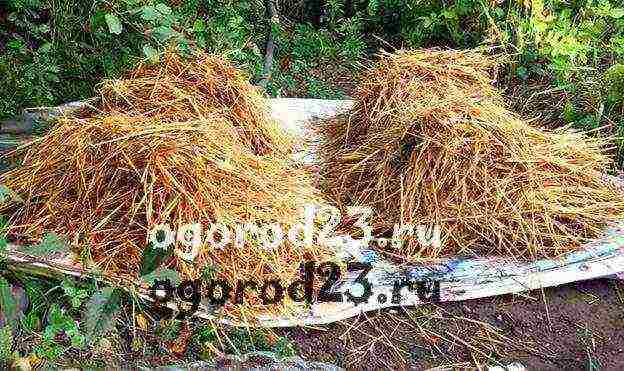


↑ back to content ↑ Champignon mycelium - planting
The substrate, of course, should be purchased from a reliable representative (best of all - special laboratories). When the compost is already ripe, we transfer it to the agreed place, put it in boxes or special forms, where further actions will take place:
- To get a good harvest of mushrooms, about 500 g of mycelium or 400 g of these varietal spores are needed per 1 m² of compost.
- If mycelium is used, then small dimples, 4 or 5 cm deep, should be made over the entire surface of the container with compost, at a distance of 20 cm from each other. An appropriate amount of mycelium is laid in these pits, but if fungal spores are used for sowing, then they are simply scattered evenly over the surface of the substrate.
- After a while, you will notice cobweb strings covering the surface of the compost containers. By this time, the temperature of the air humidity in the room should be at the level of 75-95%. To prevent the substrate from drying out, it can be sprinkled from time to time with clean, settled water from a spray bottle, and additionally covered with a clean, damp cloth or paper.
- The mushroom mushroom begins to grow at a temperature of +20 .. + 28 C °, the active phase of the spread of the mushroom "spider web" occurs after about 10 or 12 days, then the top layer of compost will need to be sprinkled with the appropriate soil mixture (about 4-5 cm), wait another 3 days, after which move the containers with future mushrooms to a colder room with a temperature of +12 .. + 16 ° C. Or, forcibly lower the temperature in the room to a given indicator of the mercury column.
- Please note that ordinary garden soil for "sprinkling" will not work for you. Prepare in advance a mixture of 1 part limestone, 5 parts peat, 4 parts clean soil.After 3 - 3.5 months, expect the first well-deserved results of your labors.
A harvest from one mycelium can give from 5 to 8 ripening periods for new mushrooms. This is called a "wave", the most generous collection of mushrooms falls on the first three "waves". Here it is important to catch the moment of ripening - when the cap is still covered from below with a thin white skin (film), and brown plates are not yet visible. Mushrooms need to be twisted, as it were, from the place of their growth, but not cut off (so that harmful bacteria do not penetrate into the mycelium through the cut site).
After the crop is harvested, gently sprinkle the substrate with the above-described soil mixture again. During the next two weeks, they will grow especially actively.
A mushroom correctly extracted from the soil, photo:

Hat in optimal ripening state, photo:
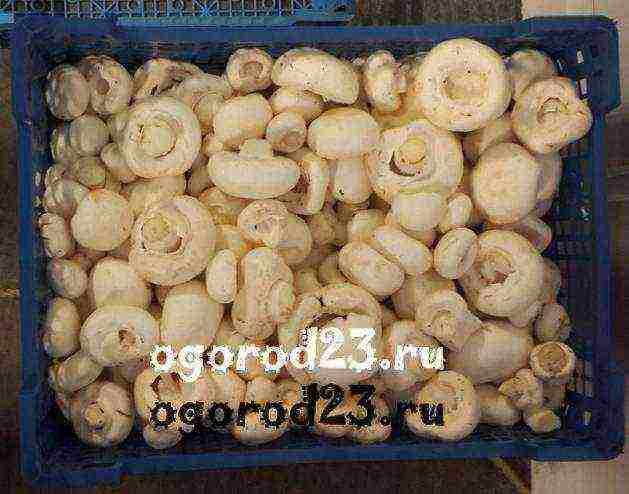
↑ to the content ↑ How to grow mushrooms in the country in the open field?
In addition to the most commonly used "basement" method of growing mushrooms described above, there are other alternatives. For example, how to grow mushrooms at home, namely, at their summer cottage. Sometimes, for some reason (lack of a basement, garage or other suitable premises), the desire to grow these mushrooms seems impossible. But if you are the happy owner of a summer cottage, everything is feasible!

The most successful period for this is summer and autumn, here it is also important to choose a comfortable place. Champignons - where do they grow? In shaded places, on specially prepared soil, the place for the mycelium should be moderately moist, the earth should not dry out, the sun's rays should not illuminate the chosen place too much. To protect against drought on hot days, the beds are often covered with plastic wrap or special covering material to create a certain microclimate. It is important to bring mushrooms as close as possible to conditions similar to their natural growth environment. Since we cannot influence the weather conditions, we must try to give the mushrooms moisture - when they need it, as well as the availability of fresh air.
In the garden under the trees, photo:


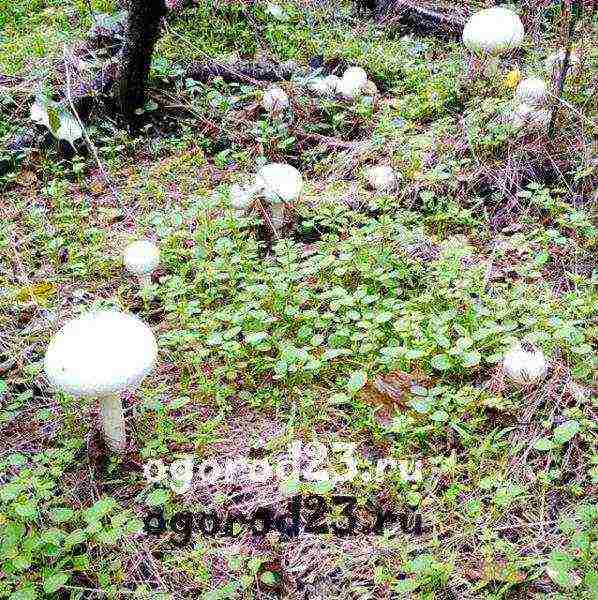
After sowing the mycelium in the beds, in the open field, growing champignons - their technology, practically does not differ from the rules for growing in a cellar. After a couple of weeks, the "cobwebs" of mycelium grow over the soil surface, at this point the temperature is lowered by sprinkling the soil surface with a thin (up to 5 cm) layer of moist earth. The temperature, similarly, should vary within +12 .. + 15 С °, but in no case should it reach above +20 С °. As in the above method, it will be much more productive if this land contains peat and limestone. Regular watering (or rather, delicate irrigation) is best done after sunset - this will optimally moisturize the soil and prevent a dense earth crust from forming. With the right approach to business, in about 3-4 weeks you can expect a harvest of your own mushrooms.
Mycelium sprouts cobwebs, photo:
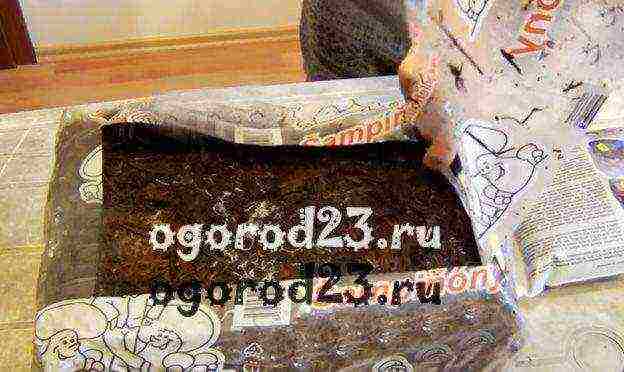
Let's summarize how to grow mushrooms in the country:
- It is better to plant mycelium or spores on soil specially prepared for this. This can be soil brought from the forest zone.
- The soil should be optimally saturated with fertilizing, be well moistened, not have stones, brick fragments or remnants of old roots.
- It is best to plant mushrooms outdoors at a neutral air temperature - +21 .. + 22 ° C.
- If a greenhouse is chosen for planting, you should carefully monitor the level of humidity and air temperature in it. The conditions are not very different from the basement or garage cultivation of mushrooms. It should be remembered that heat and drought are destructive for them.
- As already mentioned, the planting technique does not differ from the "basement" analogue (20 cm from each other, shallow pits, dusting with soil mixture after the appearance of the "cobweb").
- With the receipt of the first mushrooms, the abundance of watering can be reduced (so that the roots do not rot), irrigation is our everything in this matter.
After all the waves of the mushroom harvest come to naught, the spent substrate can be simply disposed of, or it can be quite successfully used as an organic fertilizer or mulch for some trees or even flower beds. Of course, for re-growing mushrooms, it is no longer suitable, but as an excellent top dressing for your green inhabitants, it will quite serve. As for all kinds of containers, boxes after harvesting and composting, they will require mandatory disinfection treatment, as well as the room where the mushrooms were grown.
↑ back to content ↑ Reviews of those who grew champignons
Champignon is such a mushroom, the demand for which is much higher than for oyster mushroom. For example, we buy them for every holiday, but oyster mushrooms, perhaps once or twice a year. If oyster mushroom can be grown in the garage without any preparation, then, for the champignon, you need to specially equip the room with ventilation, irrigation, and an automatic system for maintaining the set temperature.
Goshek
A friend of mine grew mushrooms in the basement of a wooden house. As a result, the logs were infected with a fungus. It is better to grow them in a specially designed room.
Nadeya
Hi, I don't know if my experience will come in handy, I really just collect them, I work on the farm where they are grown. 1) they do not need light at all. They grow in our dark hangars. When we work, we turn on the light, of course. When not, then no. 2) When they germinate, you do not need to water them. It is necessary to water before such small fungi come out, otherwise if water gets on them, they get dirty and get sick 3). We have sawdust (more precisely, compost with straw) in a layer of about 15 cm, and sprinkled with earth on top. The ground layer is about 5 cm. The total height of the beds, respectively, is 15 + 5 cm. 4) Temperature + 15-20, the lower (up to 15), the supposedly better they grow. 5) I don’t know about humidity, I haven’t seen the sensors even once, but it’s quite possible - since we have them in 5 rows (racks) 6) Harvesting: Tear off carefully, as if unscrewing it from the ground, it is enough to make half a turn. Collect gradually as it grows. As soon as the caps begin to open (they become such a brownish color and soft to the touch, but have not yet opened), collect everything that has come out with the exception of the smallest ones the size of a fingernail. Water again, as it should, and wait a week for the second harvest. Then you can wait for the third. We have the third - the last one, then everything is thrown away (composted) and everything is laid again anew.
Nadya
Yes, they grow on their own 😉 We put cow dung in a pile, and the cows graze in the meadow, where mushrooms and hats are found and eat. Here we grew up on last year's manure, and when they sprinkled the garden with manure, they still grew there for 3 years, not much, but there was enough for pizza.
Gopher
Growing champignons at home for beginners cannot be called an entirely easy process, but, as in any new business, observing the rules, as well as taking into account the advice from already experienced mushroom pickers, will undoubtedly help you in this interesting, exciting activity. And the crop grown with your own hands will delight you, your loved ones and, quite possibly, will bring material income!

Growing mushrooms in a private household, in dachas and even in apartments is becoming fashionable today. Firstly, in the store, mushroom products are not sold at a low price. Secondly, the homemade mushroom, grown without the use of unknown chemicals, is environmentally friendly and safe for consumption. Thirdly, mushroom growing can be made a profitable business, or at least a good source of additional income. Fourthly, it is a very interesting and exciting hobby. Take a substrate, put mycelium in it, create conditions. And it starts to grow like mushrooms.
Growing champignons at home for beginners
Before you start growing mushrooms
You need to think well and weigh your desire and capabilities on two scales. If they are at about the same level, it is worth the risk. Information for beginners: growing mushrooms at home is a more laborious process than growing oyster mushrooms. But less long-term and more effective than growing porcini mushrooms.
It will take certain costs for the purchase of materials, arrangement of the premises, as well as patience and certain skills. Provided that you already have a suitable room and you only need to create favorable conditions in it.
Premises
It should be moderately cool, such as a cellar or basement. If neither one nor the other is not present, it is difficult to advise anything. Perhaps a garage or greenhouse will do (during the cold season). In spring and early summer, before the onset of extreme heat, mushrooms can be grown without a room at all. The main thing is that the air temperature is not higher than + 20 ° С. Indoors, in the case of year-round cultivation, the temperature should be constantly maintained in the range of + 12 ° С ... 18 ° С, and the humidity should be in the range of 65-85%.
Premises for growing mushrooms
Substrate
The most important item on the list of prerequisites for the successful cultivation of mushrooms is the substrate (or, as it is also called for its composition, compost). The following composition is generally recognized as a fruitful compost option.
- Horse or cow dung (or pork or bird droppings, which can be taken, but not desirable).
- Straw.
- Urea.
- Superphosphate.
- Gypsum.
- A piece of chalk.
- Alabaster flour.
Substrate for growing mushrooms
Table. The proportions of the components for making compost from mullein or horse manure.
Table. The proportions of the components for the composting of poultry manure.
By the way! To cover a one square meter area with mushroom compost, you need compost made from 40 kg of straw base (the rest of the components, according to proportions).
Video - How to disinfect mushroom substrate
How to prepare compost
It is better to carry out this procedure in the air or, in extreme cases, in a regularly ventilated area. As the compost matures in a heap, where the straw is layered with manure and watered with water, the heat can rise to + 70˚C. There is an intensive release of carbon dioxide, water and ammonia vapors into the atmosphere. Of course, a person should not breathe this mixture for a long time.
It is good to place the compost place in the sun (the higher the temperature inside this “puff cake”, the faster and better the compost will ripen). But it is worth providing shelter from rains, since heavy rain can wash out all the useful components necessary for the growth of future mushrooms from the compost.
Compost pit for preparing the substrate
Advice! If it is not possible to protect the compost heap with a canopy from atmospheric precipitation, cover it with roofing material or a thick film before the rain. Be sure to lift the film from the sides, leaving the sides open.
The straw for the substrate must be fresh, dry, free from mold and other defects. Before starting laying, the straw is soaked in a large tank of water for a day. If there is no such reservoir, spread the straw on polyethylene and water it abundantly several times a day, preventing it from drying out.
Laying the compost heap
Straw and manure prepared in this way begin to be laid in layers.
The first layer is straw. Then - manure or droppings.
Each layer of straw is sprinkled with ammonium nitrate, urea in the proportions indicated in the table.
Each layer of straw is watered abundantly with water.
In total, there should be at least 3-4 layers of straw and, accordingly, the same amount of manure.
You need to finish the laying with straw.
Water once again to keep the moisture content of the compost heap constant.
The heap must be at least one meter high.The length and width are arbitrary.
Preparing compost for cultivation
champignons
For a week, the multi-layered structure is basking in the sun. Then comes the moment of the first shaking up. The procedure is carried out with a pitchfork. Shaking up a compost heap is not easy. But they cannot be neglected, since for the speedy composting inside it is necessary to provide oxygen access.
During the first shaking, plaster of Paris is added. It will improve the structure of the compost.
The second shaking is carried out without waiting for the next week, 3-4 days after the first. This time superphosphate and chalk are added.
Important! If the pile is slightly dry in the sun, it is watered abundantly with water. It is impossible to dry out the compost, its formation will stop.
The third and fourth shaking is carried out in four consecutive days. After three weeks, the compost heap will lose its strong ammonia smell and will turn into a pleasant chocolate color. The straw in the compost will become soft and tear with your fingers.
Ready-made compost for growing mushrooms
High-quality compost substrate, completely ready to use, does not stick to the palm, bounces in the fist when squeezed, leaves a wet, but not dirty mark on the skin.
Advice! If you overmoisten the pile, and moisture literally flows out of the compost during compression, it should be decomposed to dry (but not dry, but only reduce the humidity to 60%), adding half the rate of chalk.
The finished substrate is filled in racks, boxes or other containers where mushrooms will be grown. The temperature of the substrate must be lowered before the introduction of the mycelium.
Germination composting process
Preparation of the substrate for further planting of the mycelium
If you plan to grow mushrooms in a room specially designated for this enterprise, for example, on the earthen floor of the cellar, the compost is poured directly onto the floor, in a layer of 70 cm, forming beds with an area of ½ m² or 75x75 cm.
- If in the basement you have equipped racks on which future mushroom crops will grow neatly, they must be equipped with bumpers, and then you can put the compost directly on the racks, with a layer of 45 cm.
- If cultivation is supposed to be in boxes that can be stacked in the same basement or cellar (no more than two meters stack height), because the mushrooms do not need light for development, the compost is poured into boxes. Backfill layer - 25 centimeters
- If you grow mushrooms in an open or greenhouse ground, the compost is rammed directly onto the surface of the ground, 25-30 cm high. The beginning of the laying is early spring, when the ground thaws. Sheds are made over the open ridge to protect from precipitation and sunlight that is too intense for shade-loving mushrooms.
- The compost is well compacted by hand, the surface is carefully leveled.
Racks for champignons
Mycelium
After the preparatory work, the most important moment comes - planting the mycelium. Mushroom mycelium can be planted at a soil temperature of no higher than + 28 ° C at a depth of 5 cm.Check the temperature with a thermometer. This is important because exceeding even two degrees will kill the mycelium.
The planting material for growing champignons, like other cultivated mushrooms, is a sterile mycelium, which is grown in special laboratories. Champignons for cultivation in culture are selected in two varieties:
- double-sided white;
- double-cornered brown.
Champignon mycelium
There are no significant differences in their taste and nutritional value. The only difference is in the color of the mushroom, according to the name, white or brown. Sell mycelium or mycelium in bags or jars. Packing is usually 1-2 kg. The mycelium of both varieties is grown in two ways - on manure and on cereals.
The first, dung mycelium, will be needed for planting 500 g per m² of area. Grain - not less than 100 g.
Planting mycelium
The dung mycelium is a fairly monolithic lump, which, before planting, must be divided by hand into small pieces, half a matchbox in size.
- The mycelium prepared in this way is laid out on a large tray in one layer. In the ground, a part of the upper layer is lifted with a wedge-shaped peg so that a piece of mycelium can be laid there.
- Planting is staggered with a cell distance of 20 cm.
- Part of the mycelium is covered with a substrate, no more than 3 cm thick.
Compost overgrown with mushroom mycelium
Grain mycelium is a common grain on which the spores of the fungus are planted. It is sown in the same way as you would sow any cereal.
- The top layer of compost, 3 cm wide, is removed from the ridge or box.
- On the surface, "mushroom grains" are randomly scattered.
- The compost is poured back and slightly pressed down so that there is no void between it and the grains.
Grain mushroom mycelium
By the way! Wild mushroom mycelium is also suitable for growing homemade champignons. If you find a place where mushrooms grow, take a closer look at the soil. A land riddled with a web of whitish-gray mushroom spores is a good starting point for your mushroom plantation.
Champignon plantation care
After you have landed, the room temperature is kept high. This is a prerequisite - the germination of mycelium will not begin at below + 24 ° C and above + 26 ° C. At this time, at the initial phase of mycelium growth, do not expect immediate "shoots". Champignons are not vegetables. They grow deeper into the soil, gaining ground and forming the future harvest. At low temperatures, growth is insufficient, at high temperatures - weak formation of the fruiting body.
Rules for harvesting champignons at home
The moisture content of the compost must be constantly maintained in the range of 55-60%. As soon as it dries up, the mycelium "freezes" and stops growing. The compost is moistened superficially, from the sprayer, so that the water does not flood the mycelium, otherwise it will become moldy and die
It will take 12 days to grow deep into the mycelium. After that, the temperature in the room will definitely decrease. Either the heating is turned off, or the transoms and ventilation openings are opened - all methods are good to reduce the temperature to + 18 ° С… 20 ° С.
By this time, it is necessary to prepare the soil for backfill. The mycelium will grow upwards not on compost, but from nutrient soil of the following composition:
- sod land;
- loam;
- sandy loam;
- fine-structured peat soil.
Any of the listed structural types will work. The main thing is that the soil is not heavy. To add "airiness" and ensure the penetration of air to the spores of the fungus, the soil is sieved on a coarse sieve.
Agricultural practices and terms of their implementation when growing mushrooms
Before backfilling, the soil is moderately moistened. And cover them with a layer of compost 3-4 cm.
Further, caring for the mushrooms is simple.
Maintaining the temperature within the specified limits. - + 16 ° С ... 18 ° С, plus - minus two more permissible degrees.
Maintaining humidity in the range of 65-85% (air) and not higher than 60% - of the earth layer.
Daily intensive ventilation of the room to remove accumulated carbon dioxide.
You can collect the first homemade mushrooms from your own plantation already on the 35-40th day. One fruiting cycle lasts about two months.
Agricultural practices and terms of their implementation when growing mushrooms (continued)
Despite all the seeming difficulties and conventions, the cultivation process, starting from the moment the compost is prepared, takes no more than four months. For two months of fruiting, the crop can be harvested 6-7 times. From 5 to 10 kg of mushrooms are collected from a meter of a square ridge. The next crop ripens after 5 days.
Harvesting champignons
Important! Mushrooms must be collected at a stage when the film between the stem and the cap is not damaged and connects them tightly.Opened mushrooms with darkened (for white varieties) plates and damaged film, the remnants of which can only be seen on the stem, it is better not to eat
Champignons are not cut with a knife when they are collected. The mushrooms are twisted with a gentle movement of the hand. The holes formed after collection are sprinkled with soil and slightly moistened.
Video - Growing champignons at home (part 1)
Video - Growing champignons at home (part 2)
Video - Harvesting champignons
Everyone is familiar with champignons - they can be found on the shelves of all grocery stores all year round. Moreover, they can differ in the color of the hats: brown, white or cream. They can also differ from each other in the shape and size of the cap, which does not affect their taste in any way.
Regardless of the color and other varietal characteristics, these mushrooms contain a large amount of minerals, vitamins and nutrients necessary for humans, and at the same time, the number of calories in champignons is quite low - only 27 per 100 g, so their use does not affect weight gain ...
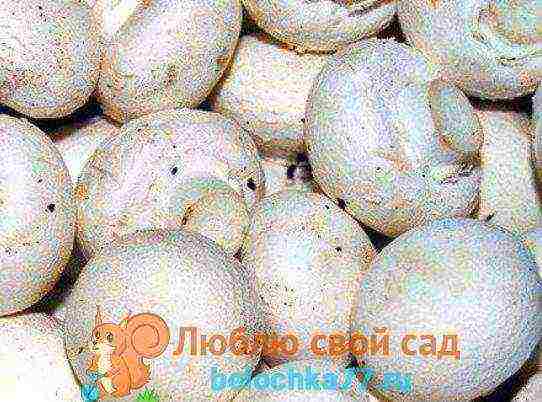
In order to grow champignons on your own, you must first familiarize yourself with the conditions for their cultivation:
- Temperature. Champignons grow at an air temperature of about 15 ... 17 0 С, and at a higher rate, their growth stops.
- Humidity. This indicator changes, for example, when planting the mycelium of mushrooms, it is necessary to maintain the moisture content of about 90%, and after its survival rate, reduce it to 60 ... 70%.
- Ventilation and air circulation. Growing mushrooms is impossible without ventilation and aeration, since the substrate in which it sits constantly releases various substances, and when they stagnate, mustiness forms. At the same time, it is important not to create drafts - mushrooms do not like them.
- Lighting. For growth and development, champignons do not need light at all, they are grown in the dark. However, to carry out work with them, you still need a little lighting, which is then turned off.
- Watering. Watering is preferable with an irrigation nozzle or watering cans with fine mesh.

Mycelium - this is the planting material for champignons, the cultivation of which is simply impossible without it. There are two types of mycelium: grain and compost, so named in connection with their growing environment. Previously, mycelium was removed only in a compost environment, but now mycelium grown on wheat grain has gained immense popularity. It is believed that they take root much faster and better.
The mycelium is produced in a laboratory environment, so it is usually ordered online or purchased through manufacturing firms, since the production of mycelium is considered a separate business. But many, in order to save money, breed their mycelium at home. But, as practice has shown, this is a very difficult task and requires sterility, which often cannot be observed, and mold and harmful bacteria appear instead of mycelium.
At home, mushrooms are rarely grown, using mainly greenhouses, cellars, cellars or open ground ridges. If you want to experiment and plant myceliums in the room, then it is imperative to comply with all the conditions for growing mushrooms: temperature of the content, air humidity, ventilation and airing, etc.

Mainly compost consists of straw and horse manure, into which nitrogenous mineral fertilizers are applied: urea, superphosphate, ammonium nitrate, and gypsum. It is best to use horse manure, since when you replace it with cow or poultry droppings, the quality of the substrate will dramatically decrease. You can buy ready-made compost in a specialized store, but experienced mushroom pickers advise you to compose it yourself. Step-by-step instructions for composting:
- Soaking the straw for 24 hours in warm water.
- Place in a stack alternating layers of straw and manure (maximum 8 layers) and wetting each layer with water.
- After 4 days, mix the compost and add urea and superphosphate.
- After another 3 days, mix again and add ammonium nitrate.
- Stir the compost at intervals of 3 days two or three more times.
- Add gypsum with the last stirring.
For 1 ton of manure with straw, you will need 3 kg of urea, 5 kg of superphosphate, 4 kg of gypsum.
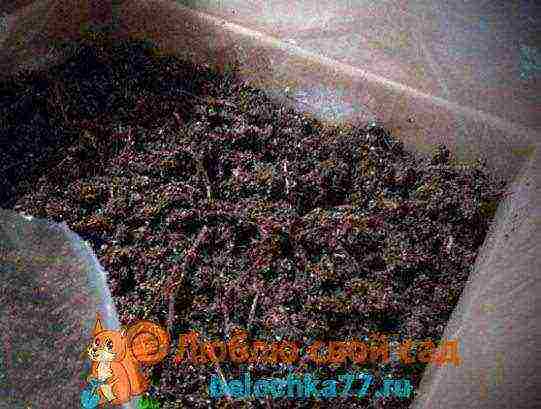
At home, you can use earthen floors or racks, but the most convenient option will be boxes that can be stacked on top of each other, which significantly saves space in the room. Usually their dimensions are 50x100 cm, and the height is 25 cm. The compost is filled with a layer of 23 cm, and when it is laid, it is carefully tamped by hand.
The mycelium is planted to a depth of 4 ... 5 cm in a checkerboard pattern at a distance of 20 cm from each other. The main thing here is not to rush and before planting make sure that the temperature of the compost after the fermentation process has dropped to 27 0 C. Only then can you start planting myceliums.
>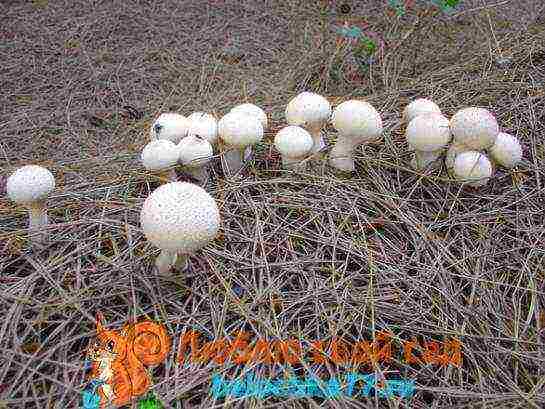
Many gardeners, due to the fact that they spend the entire summer season in the country, grow champignons there. Below are detailed instructions for growing these mushrooms outdoors.
At the dacha for growing champignons, it is necessary to choose a shaded and calm place. The bed is usually located from west to east and various structures are installed to protect it from the sun's rays.
Ridges for champignons are recommended to be prepared in the fall. To do this, at the end of the season, trenches are dug no more than 1 m long and a width that is convenient for further collection. If the presence of several beds is envisaged, then a passage of at least half a meter is left between them. The recommended depth of the trench is 30 cm. A 10 cm drainage layer is poured onto its bottom (crushed stone, sand, gravel, etc. can be used as it), this will ensure the timely outflow of excess moisture.
Next, the trench is filled with mowed weeds and grass, tamped well, poured over with cow dung. And at the end, a previously removed sod layer of soil is laid on top, but with the grass down. And in this state, the ridge is left until spring.
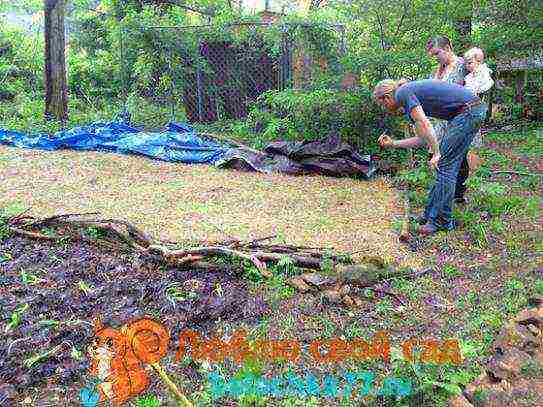
In the spring, a special compost is prepared, which will fill the main volume of the trench (25 cm layer). Its main component is buckwheat straw, which should not have any dark spots and under-warming. It will take on average 2 ... 3 armfuls per 1 m 2. The required amount of straw is placed in a box, 3 buckets of rotted cow dung, 5 kg of chicken manure and 2 ... 3 handfuls of ammonium nitrate are added. All ingredients are well kneaded and laid out in trenches. The mixture is left to settle in them for a week and compacted. As a result of all these operations, a layer of 25 cm should be obtained.
It is possible to plant mycelium only when the compost reaches a temperature of about 27 0 C. If it is higher and fluctuates around 30 0 C, then there is a possibility that the mycelium will not take root and die. It is planted to a depth of about 5 cm at a distance of 20 ... 25 cm from each other in a checkerboard pattern, sprinkling with earth. When all the pieces of mycelium are sitting in their places, a 30 cm layer of straw is placed on the top of the garden bed, which will protect the mycelium in the ground from drying out. Whether myceliums have taken root or not - it will be known in a couple of weeks, and until that moment it is necessary to carefully water the straw layer so that water does not get into the compost.
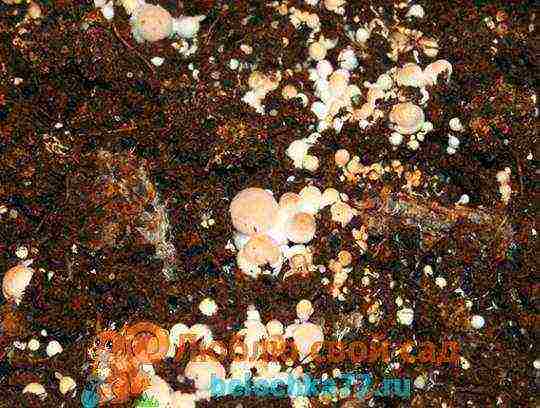
In 2 ... 3 weeks it will be possible to see how the planted myceliums have grown. However, the first time you can check the survival rate within a week after disembarkation. If there are no signs of growth, then you need to irrigate the substrate itself with water, it is possible that the mycelium is lacking moisture. When the myceliums have taken root, the protective layer of straw is removed, and sod soil is poured onto the bed with a layer of 4 cm, slightly compacting it. In order not to use special protective installations from the sun, you can again cover the bed with straw, but then you will have to carefully monitor its ventilation.The very first mushrooms will appear within 1.5 months after planting, however, if the weather is too hot, then their growth and development stop. The total duration of mushroom fruiting in the open field is up to 4 months.
Basements and cellars are ideal for growing mushrooms, of course, if they are properly equipped for these purposes and the appropriate agricultural technology is followed.
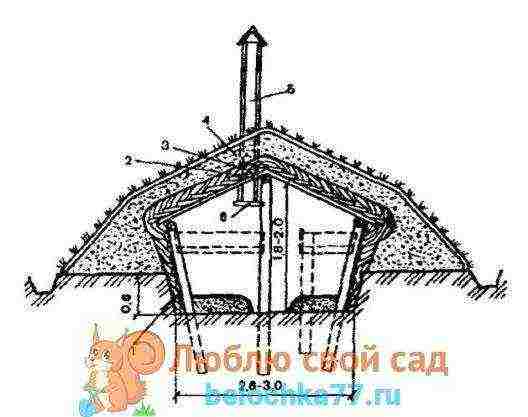
The main parameters that need to be considered when growing mushrooms in the basement are:
- air humidity. To control humidity, a hygrometer must be installed in the basement. To increase the humidity in the room, you can spray with water, and to reduce it, simply ventilate;
- air temperature. To control this parameter, a thermometer must be installed. If the mushrooms are grown only in the summer, then additional heating of the cellar will not be required. If, however, throughout the year, then you will have to think about its insulation;
- ventilation. In this case, forced ventilation will be required, since the room is closed. The compost in which the mushrooms sit constantly gives off carbon dioxide, the accumulation of which will lead to mustiness. Therefore, a constant change of air is simply necessary in the basement. Ventilation should not create drafts.
In order for the yield losses due to infection with diseases and pests of mushrooms to be as minimal as possible, the cellar must be pre-treated, for example, light a sulfur stick, and the walls and ceiling must be whitewashed with the addition of copper sulphate. You can use other methods of processing the surfaces of the cellar, the main thing is that it is clean. After disinfection, it must be well ventilated.
The compost is prepared according to the standard technology from horse manure and straw with the addition of nitrogen-containing mineral fertilizers.
As in the previous case, pieces of mycelium are placed at a depth of 4 ... 5 cm in the compost, when its temperature after fermentation drops to 27 0 C. The distance between adjacent pieces is 20 cm. If grain mycelium was purchased, then it is not deepened, but simply spread over the surface of the compost.
After the myceliums have taken root and began to creep over the surface of the compost (14 days after planting), they are sprinkled with a layer of soil of 4 cm, which can be prepared from peat, limestone and garden soil, taken in a ratio of 5: 1: 4, respectively.
Approximately 4 days after adding the soil, it is necessary to lower the temperature of the mushrooms content to 15 0. At this time, the mushrooms themselves begin to grow, the first crop of which can be harvested in 3 months.
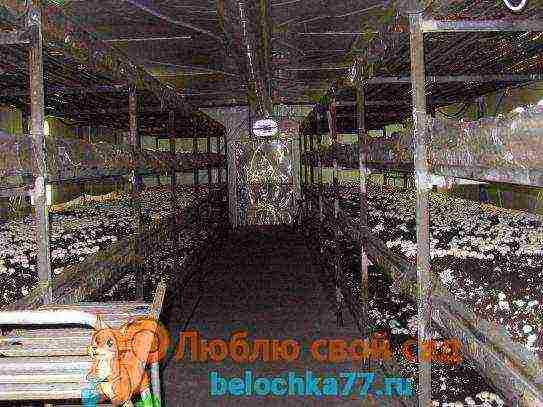
Caring for mushrooms, regardless of the place and method of cultivation, consists in maintaining the humidity and temperature conditions before and during the fruiting of myceliums:
- the temperature at this time should be 15 ... 17 0 С, since already at 20 0 С the development of mushrooms stops, which is extremely undesirable;
- air humidity should be about 70%;
- watering is carried out on the filled up soil so that the compost remains dry. It is best to use a spray nozzle while watering. So a crust will not form on the surface;
- airing is recommended regularly, especially after the first harvest. Lack of fresh air will lead to the formation of a stroma - a white crust on the mycelium, which must be removed.
>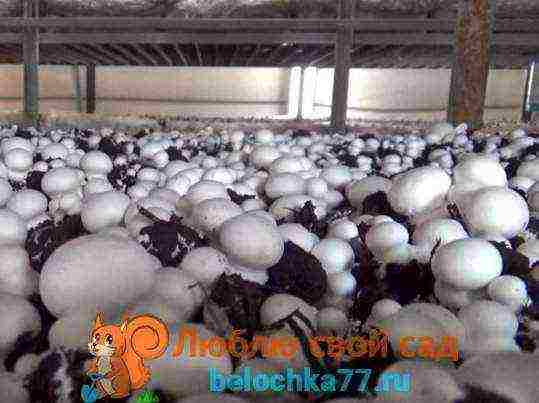
Fruiting of champignons occurs in waves, that is, mushrooms ripen not at one time, but several times. Therefore, their collection for the entire period of fruiting is carried out quite repeatedly: from 3 ... 4 to 7. Practice shows that the mushrooms show the maximum yield during the second and third waves. In other cases, mushrooms ripen more piecemeal. It is important to observe several rules when harvesting mushrooms that will help not to damage the mycelium itself and continue the fruiting period:
- the mushrooms are individually unscrewed by hand from the mycelium, without making any sudden careless movements;
- the void formed when the fungus is removed is sprinkled with soil mixture until a flat surface is formed.
If you look closely at the structure of the champignon, then the cap is connected to the stem by means of a white soft film that covers the inner plates of the cap. Mushrooms are harvested when this film is stretched, but not torn. A torn film indicates that the fungus is overripe. But mushrooms that have already become flabby and with completely bare plates are generally highly undesirable to eat.
If a new planting of mushrooms is planned, then at the end of their fruiting, it is necessary to change the compost to a new one, and disinfect the room.
>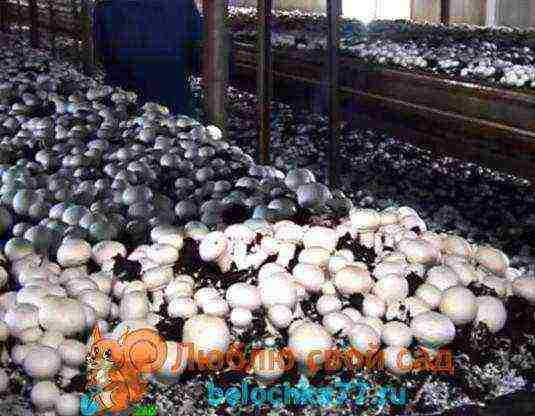
Growing mushrooms in large quantities and all year round is a cost-effective and profitable business. In order to take it seriously, it is necessary, first of all, to draw up a plan of expenses related to the search and acquisition of premises, the purchase of the required amount of mycelium, the production or purchase of compost and soil mixture for cultivation, as well as the creation of all the necessary conditions for the development and fruiting of myceliums.
In addition, it is necessary to establish channels through which the sale of finished products will take place. Of course, only with a thorough knowledge of the mushroom growing technology itself can you create an income-generating business.

